Experimental Study of a Hybrid Wave Energy Converter Integrated in a Harbor Breakwater
Abstract
1. Introduction
2. Case Study Characterization
3. Experimental Study
3.1. Introduction
3.2. Equipment and Experimental Facility
3.3. Hybrid WEC Physical Model
3.4. Testing Program
- TS1—analysis of the stability and functionality of the breakwater without the hybrid WEC module;
- TS2—analysis of the performance of the different configurations of the hybrid WEC integrated in the breakwater (Figure 7);
- TS3—analysis of the stability and functionality of the breakwater with the hybrid WEC module integrated in the structure.
4. Experimental results
4.1. Selection of the OWC Geometry
4.2. Impact of the Hybrid WEC Module in the Breakwater
- behavior of the breakwater with regard to wave reflection;
- scour development in front of the structure toe;
- number of blocks displaced from the toe berm;
- mean overtopping flow rate over the crest of the structure.
5. Conclusions
Author Contributions
Funding
Acknowledgments
Conflicts of Interest
References
- Kost, C.; Mayer, J.; Thomsen, J.; Hartmann, N.; Senkpiel, C.; Philipps, S.; Nold, S.; Lude, S.; Saad, N.; Schlegl, T. Levelized Cost of Electricity Renewable Energy Technologies; Fraunhofer Institut for Solar Energy Systems ISE: Freiburg, Germany, 2013. [Google Scholar]
- WECouncil. World Energy Resources 2016, 24th ed.; World Energy Resources, Ed.; World Energy Council: London, UK, 2016. [Google Scholar]
- Riefolo, L.; Lanfredi, C.; Azzellino, A.; Vicinanza, D. Environmental Impact Assessment of Wave Energy Converters: A Review. In Proceedings of the International Conference on Applied Coastal Research SCACR, Florence, Italy, 28 September–1 October 2015. [Google Scholar]
- Coe, R.G.; Neary, V.S. Review of Methods for Modeling Wave Energy Converter Survival in Extreme Sea States. In Proceedings of the METS2014 2nd Marine Energy Technology Symposium, Seattle, WA, USA, 15–18 April 2014. [Google Scholar]
- Gunn, K.; Stock-Williams, C. Quantifying the global wave power resource. Renew. Energy 2012, 44, 296–304. [Google Scholar] [CrossRef]
- Rosa-Santos, P.; Clemente, D.; Taveira-Pinto, F. Marine Renewable Energy: Opportunities Challenges and Potential for Integration in Aquaculture Farms. Int. J. Oceanogr. Aquac. 2018, 2, 000141. [Google Scholar]
- Bergillos, R.J.; López-Ruiz, A.; Medina-López, E.; Moñino, A.; Ortega-Sánchez, M. The role of wave energy converter farms on coastal protection in eroding deltas, Guadalfeo, Southern Spain. J. Clean. Prod. 2018, 171, 356–367. [Google Scholar] [CrossRef]
- Contestabile, P.; Vicinanza, D. Coastal Defence Integrating Wave-Energy-Based Desalination: A Case Study in Madagascar. J. Mar. Sci. Eng. 2018, 6, 64. [Google Scholar] [CrossRef]
- Puig, M.; Michail, A.; Wooldridge, C.; Darbra, R.M. Benchmark dynamics in the environmental performance of ports. Mar. Pollut. Bull. 2017, 121, 111–119. [Google Scholar] [CrossRef] [PubMed]
- Langen, P.; Turró, M.; Fontanet, M.; Caballé, J. The Infrastructure Investment Needs and Financing Challenge of European Ports; Port Investments Study 2018; European Seaports Organisation (ESPO): Brussels, Belgium, 2018; p. 94. [Google Scholar]
- Vicinanza, D.; Margheritini, L.; Kofoed, J.P.; Buccino, M. The SSG Wave Energy Converter: Performance, Status and Recent Developments. Energies 2012, 5, 193–226. [Google Scholar] [CrossRef]
- Chatzigiannakou, M.A.; Dolguntseva, I.; Leijon, M. Offshore Deployments of Wave Energy Converters by Seabased Industry AB. J. Mar. Sci. Eng. 2017, 5, 15. [Google Scholar] [CrossRef]
- Rémouit, F.; Chatzigiannakou, M.-A.; Bender, A.; Temiz, I.; Sundberg, J.; Engström, J. Deployment and Maintenance of Wave Energy Converters at the Lysekil Research Site: A comparative Study on the Use of Divers and Remotely-Operated Vehicles. J. Mar. Sci. Eng. 2018, 6, 39. [Google Scholar] [CrossRef]
- Taveira-Pinto, F.; Iglesias, G.; Rosa-Santos, P.; Deng, Z.D. Preface to Special Topic: Marine Renewable Energy. J. Renew. Sustain. Energy, 2015, 7, 061601. [Google Scholar] [CrossRef]
- Iuppa, C.; Contestabile, P.; Cavallaro, L.; Foti, E.; Vicinanza, D. Hydraulic performance of an innovative breakwater for overtopping wave energy conversion. Sustainability 2016, 8, 1226. [Google Scholar] [CrossRef]
- Contestabile, P.; Iuppa, C.; Di Lauro, E.; Cavallaro, L.; Andersen, T.L.; Vicinanza, D. Wave loadings acting on innovative rubble mound breakwater for overtopping wave energy conversion. Coast. Eng. 2017, 122, 60–74. [Google Scholar] [CrossRef]
- Sarmento, A.; Neumann, F.; Brito-Melo, A. Full-Scale WECs—Operational Experience: Oscillating Water Column—Pico Plant Ocean Wave Energy—Current Status and Future Perspectives; Springer Series in Green Energy and Technology; Springer: New York, NY, USA, 2008; ISBN 978-3-540-74894-6. [Google Scholar]
- Torre-Enciso, Y.; Marqués, J.; López de Aguileta, L.I. Mutriku. Lessons learnt. In Proceedings of the 3rd International Conference on Ocean Energy ICOE, Bilbao, Spain, 6 October 2010; ISBN 978-84-693-5467-4. [Google Scholar]
- Arena, F.; Romolo, A.; Malara, G.; Fiamma, V.; Laface, V. The first worldwide application at full-scale of the REWEC3 device in the port of civitavecchia: Initial energetic performances. Progress in Renewable Energies Offshore. In Proceedings of the RENEW 2016 2nd International Conference on Renewable Energies Offshore, Lisbon, Portugal, 24–26 October 2016; pp. 303–312. [Google Scholar]
- Arena, F.; Romolo, A.; Malara, G.; Fiamma, V.; Laface, V. The First Full Operative U-OWC Plants in the Port of Civitavecchia. In Proceedings of the ASME International Conference on Offshore Mechanics and Arctic Engineering, Trondheim, Norway, 25–30 June 2017; Volume 10. [Google Scholar]
- Falcão, A.; Henriques, J. Oscillating-water-column wave energy converters and air turbines: A review. Renew. Energy 2016, 85, 1391–1424. [Google Scholar] [CrossRef]
- Margheritini, L.; Vicinanza, D.; Frigaard, P. SSG wave energy converter: Design, reliability and hydraulic performance of an innovative overtopping device. Renew. Energy 2009, 34, 1371–1380. [Google Scholar] [CrossRef]
- Contestabile, P.; Vincenzo, F.; Di Lauro, E.; Vicinanza, D. Full-scale Prototype of an Overtopping Breakwater for Wave Energy Conversion. Coast. Eng. Proc. 2017, 1, 12. [Google Scholar] [CrossRef]
- Di Lauro, E.; Lara, J.L.; Maza, M.; Losada, I.J.; Contestabile, P.; Vicinanza, D. Stability analysis of a non-conventional breakwater for wave energy conversion. Coast. Eng. 2019, 145, 36–52. [Google Scholar] [CrossRef]
- IHRH. Projeto de Criação de um Novo Terminal para Contentores no porto de Leixões; Final Report; IHRH: Porto, Portugal, January 2013; Volume 15, 362p. (In Portuguese) [Google Scholar]
- Consulmar. Prolongamento do Quebramar Exterior e das Acessibilidades Marítimas do Porto de Leixões: Especificações para Ensaios 3D; Technical Report; Consulmar: Lisboa, Portugal, 2017. (In Portuguese) [Google Scholar]
- Capitão, R.; Pinheiro, L.; Fortes, J. Estudos em Modelo Físico e Numérico do Prolongamento do Quebramar Exterior e das Acessibilidades Marítimas do Porto de Leixões: Estudo I—Regimes de Agitação Marítima; Technical Report; LNEC: Lisboa, Portugal, April 2017. (In Portuguese) [Google Scholar]
- APDL. Relatório de Sustentabilidade 2016; Report N°11; Administração dos Portos de Douro, Leixões e Viana do Castelo, SA: Leça da Palmeira, Portugal, 2016. (In Portuguese) [Google Scholar]
- Margheritini, L.; Stratigaki, V.; Troch, P. Geometry Optimization of an Overtopping Wave Energy Device Implemented into the New Breakwater of the Hanstholm Port Expansion. In Proceedings of the 22nd International Offshore and Polar Engineering Conference (ISOPE), Rhodes, Greece, 17–22 June 2012; ISBN 978-1-880653-94–4. [Google Scholar]
- Torre-Enciso, Y.; Ortubia, I.; Lopez de Aguileta, L.I.; Marqués, J. Mutriku Wave Power Plant: From the thinking out to the reality. In Proceedings of the 8th European Wave and Tidal Energy Conference, Uppsala, Sweden, 7–10 September 2009; pp. 319–329. [Google Scholar]
- Meinert, P.; Giillin, L.; Kofoed, J.P. User Manual for WOPSim: Wave Overtopping Power Simulation; Report No. 44; Hydraulics and Coastal Engineering, Aalborg University: Aalborg, Denmark, 2008. [Google Scholar]
- ANSYS. ANSYS Fluent Theory Guide; Release 15.0; ANSYS: Canonsburg, PA, USA, 2013; 780p. [Google Scholar]
- Oliveira, P.; Taveira-Pinto, F.; Morais, T.; Rosa-Santos, P. Experimental evaluation of the effect of wave focusing walls on the performance of the Sea-wave Slot-cone Generator. Energy Convers. Manag. 2016, 110, 165–175. [Google Scholar] [CrossRef]
- Simonetti, I.; Cappietti, L.; Elsafti, H.; Oumeraci, H. Optimization of the geometry and the turbine induced damping for fixed detached and asymmetric OWC devices: A numerical study. Energy 2017, 139, 1197–1209. [Google Scholar] [CrossRef]
- Falcão, A.; Henriques, J. Model-prototype similarity of oscillating-water-column wave energy converters. Int. J. Mar. Energy 2014, 6, 18–34. [Google Scholar] [CrossRef]
- Falcão, A.; Gato, L.; Nunes, E. A novel radial self-rectifying air turbine for use in wave energy converters. Renew. Energy 2013, 50, 289–298. [Google Scholar] [CrossRef]
- Fryer, D.K.; Gilbert, G.; Wilkie, M.J. A Wave Spectrum Synthesizer. J. Hydraul. Res. 1973, 11, 193–204. [Google Scholar] [CrossRef]
- Ning, D.-Z.; Wang, R.-Q.; Zou, Q.; Teng, B. An experimental investigation of hydrodynamics of a fixed OWC Wave Energy Converter. Appl. Energy 2016, 168, 636–648. [Google Scholar] [CrossRef]
- Mansard, E.P.D.; Funke, E.R. The measurement of incident and reflected wave spectra using a least squares method. In Proceedings of the 17th International Conference on Coastal Engineering (ASCE), New York, NY, USA, 23–28 March 1980; Volume 1, pp. 154–172. [Google Scholar]
- Romano, A.; Bellotti, G.; Briganti, R.; Franco, L. Uncertainties in the physical modelling of the wave overtopping over a rubble mound breakwater: The role of the seeding number and of the test duration. Coast. Eng. 2015, 103, 15–21. [Google Scholar] [CrossRef]
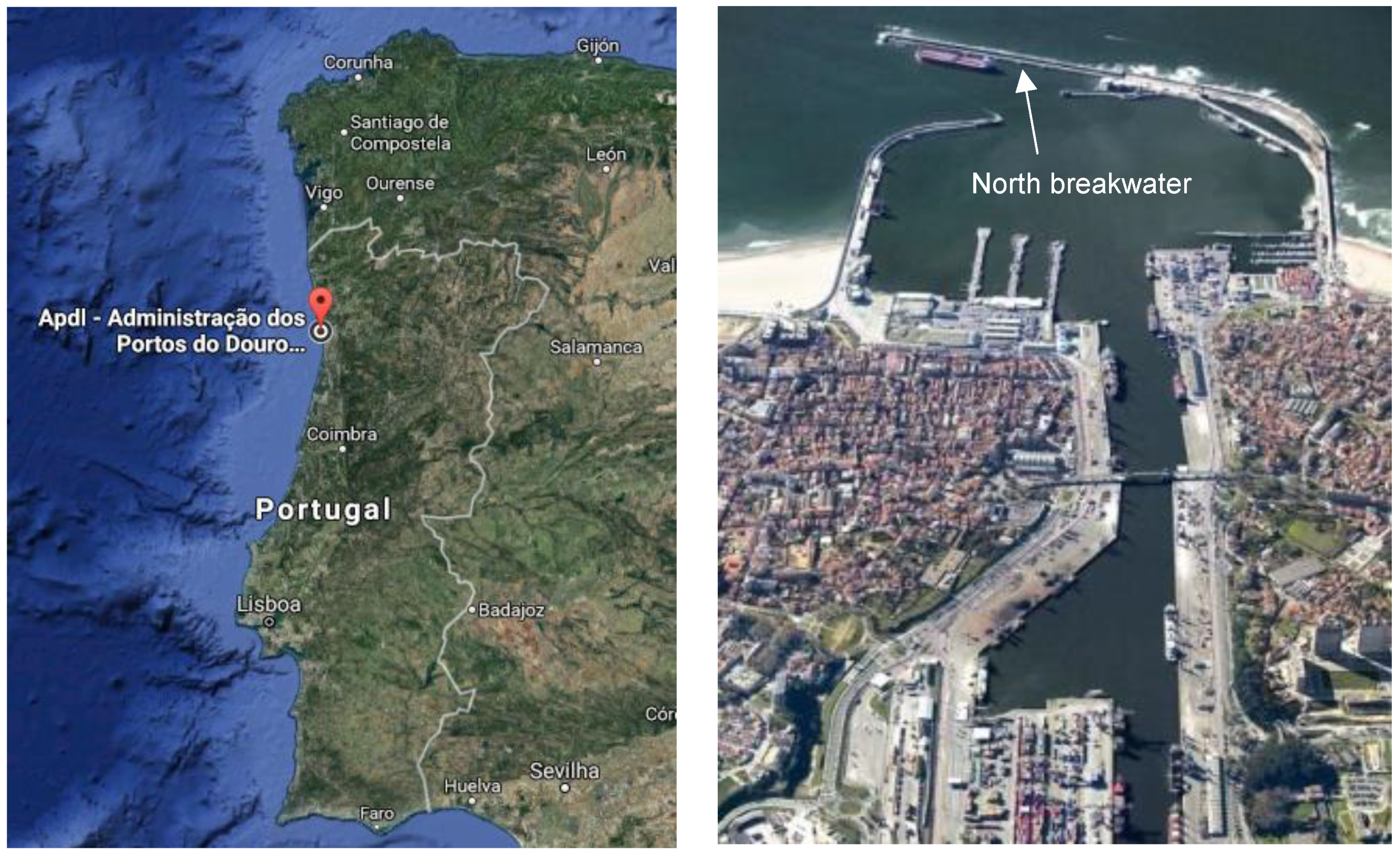
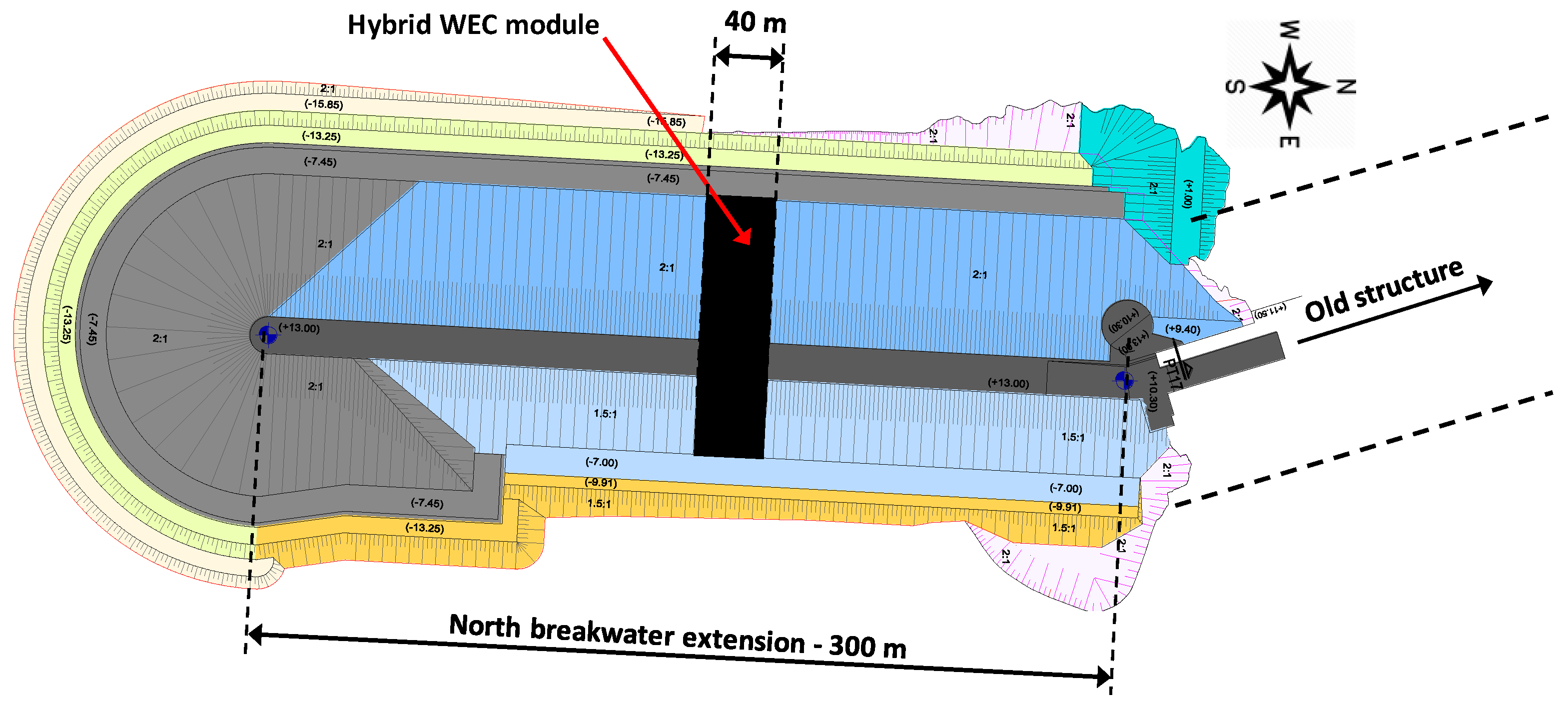


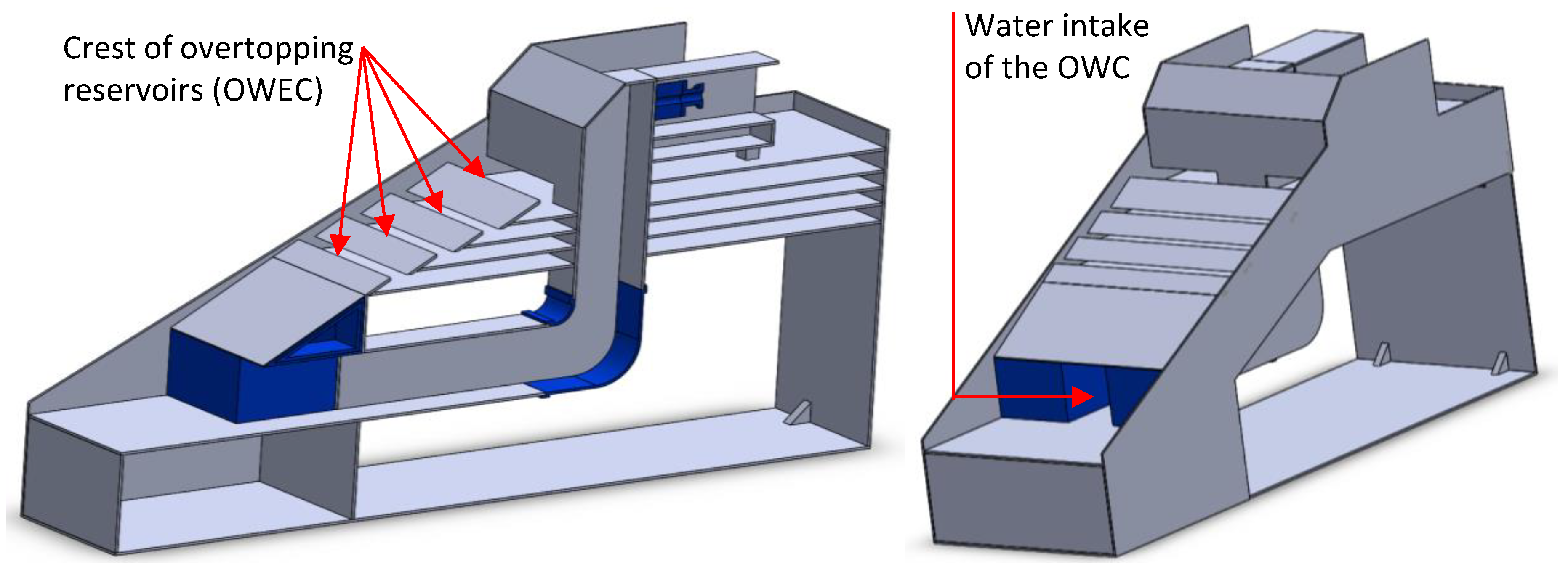

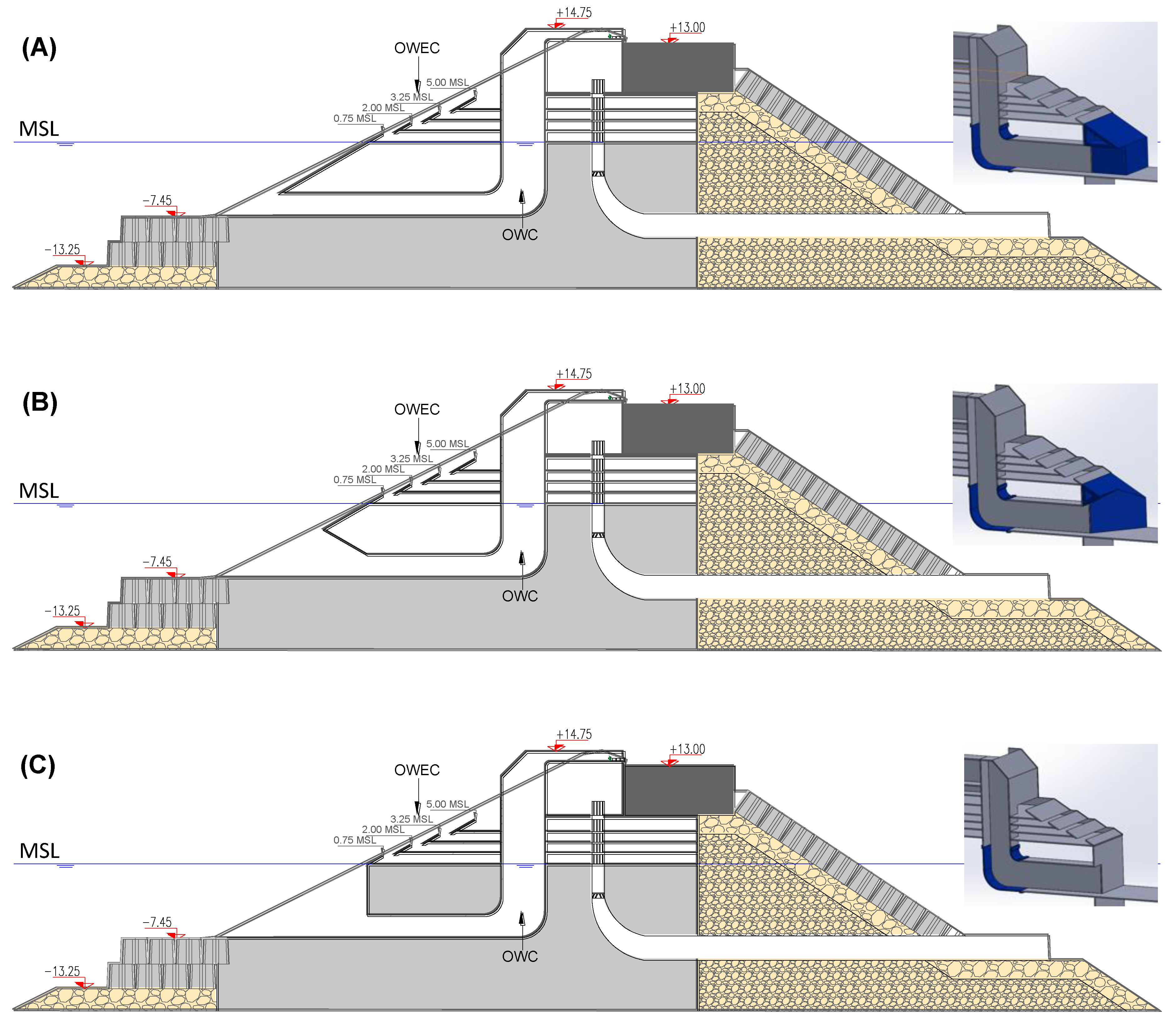
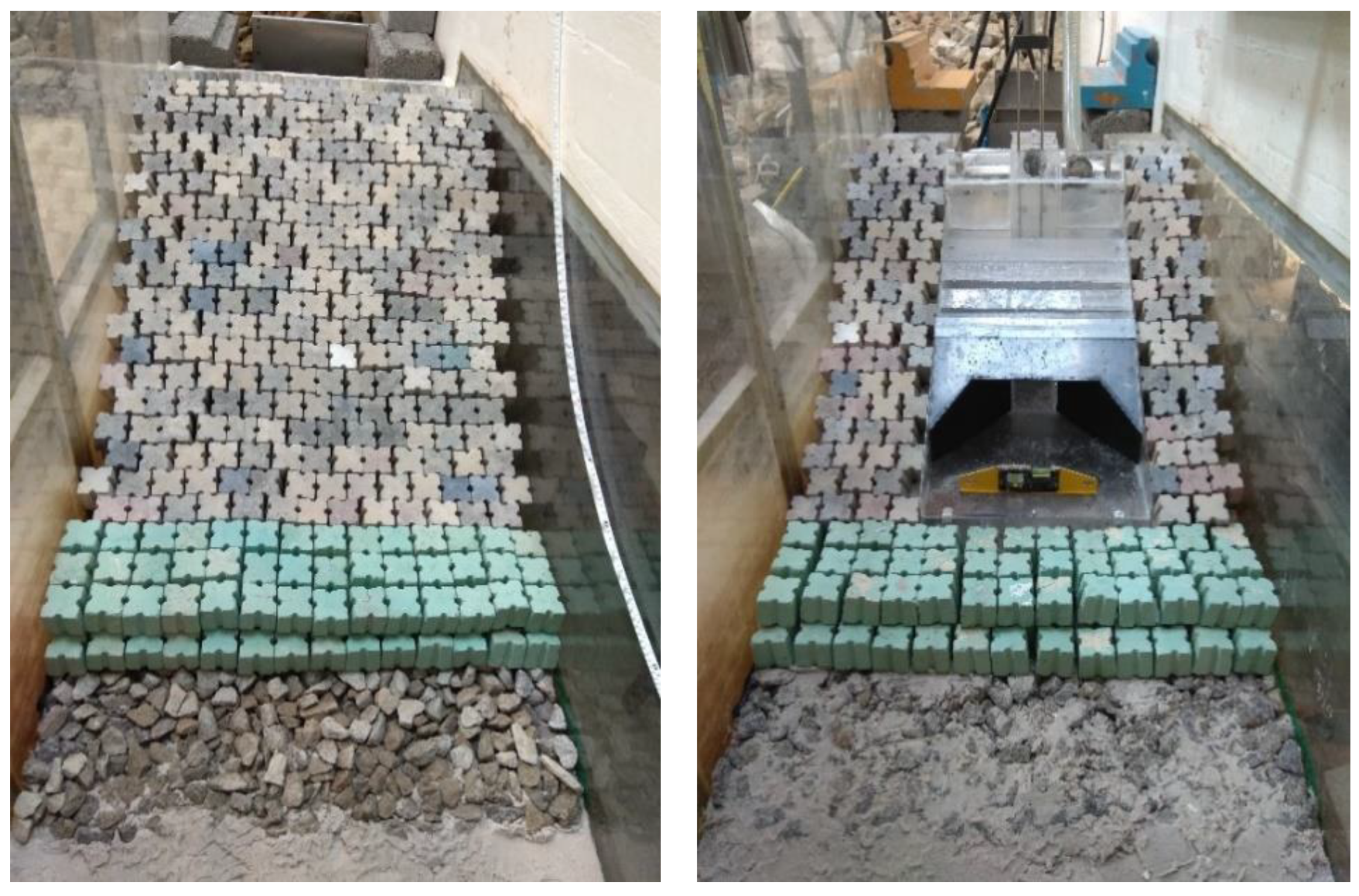
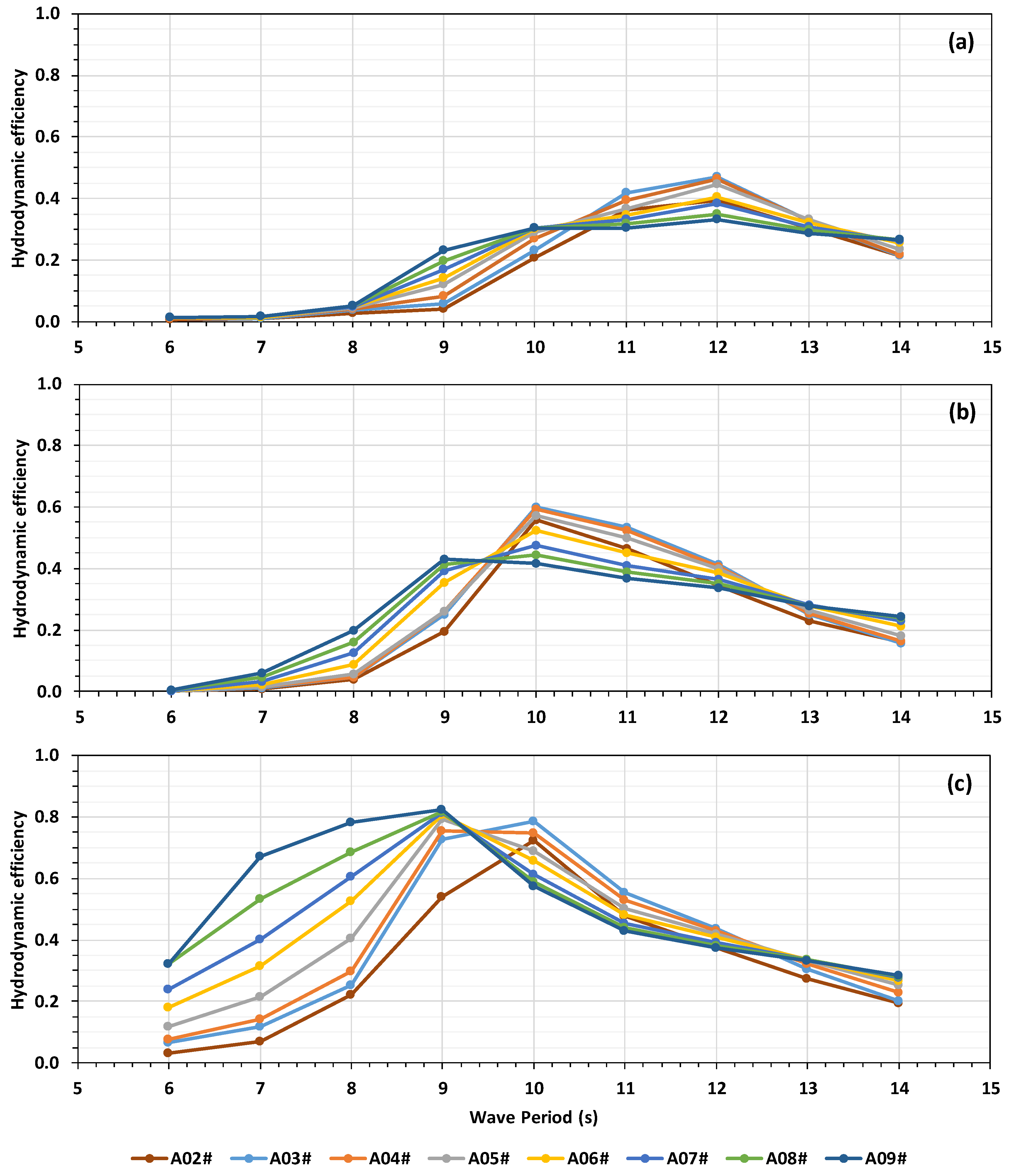
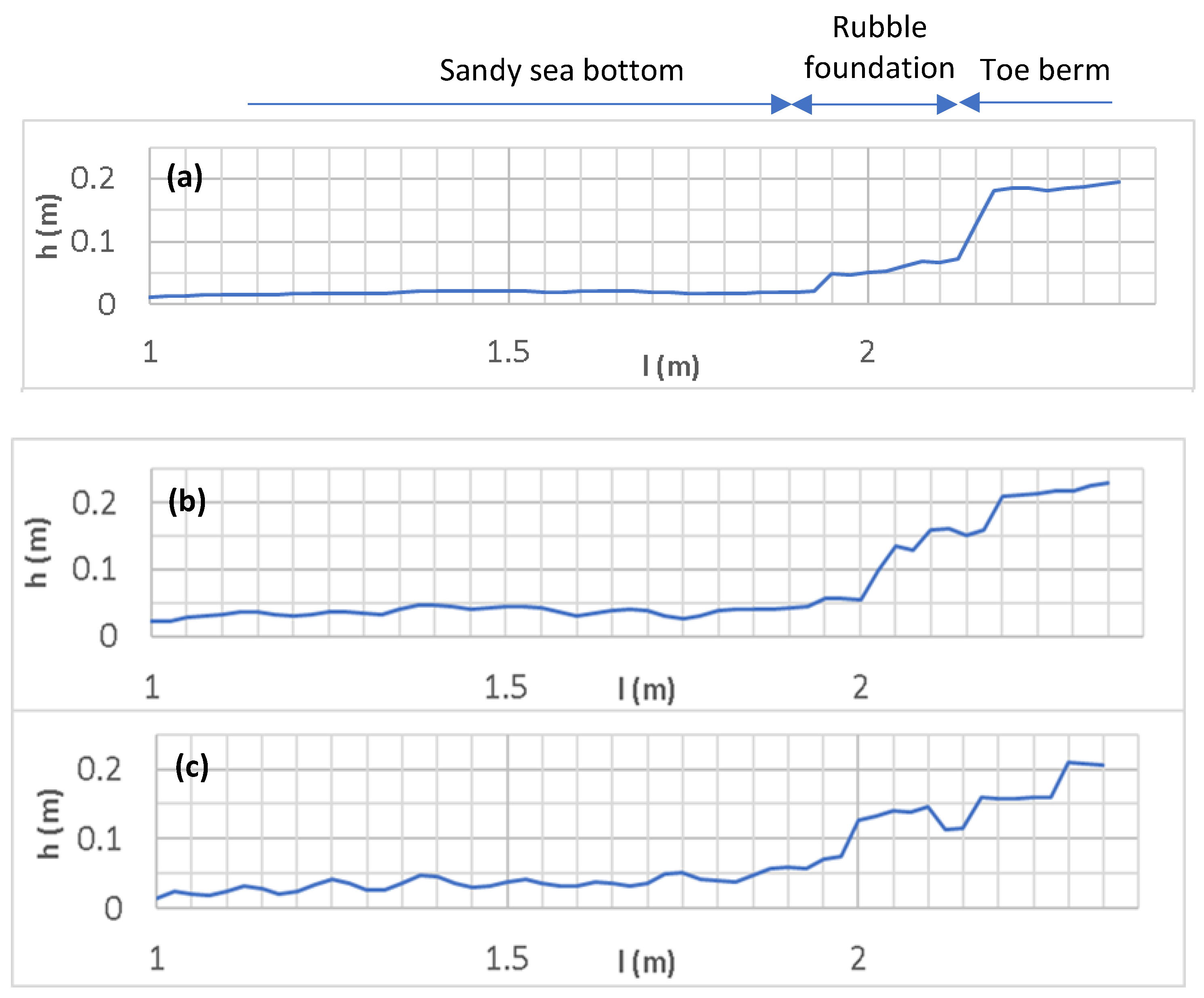
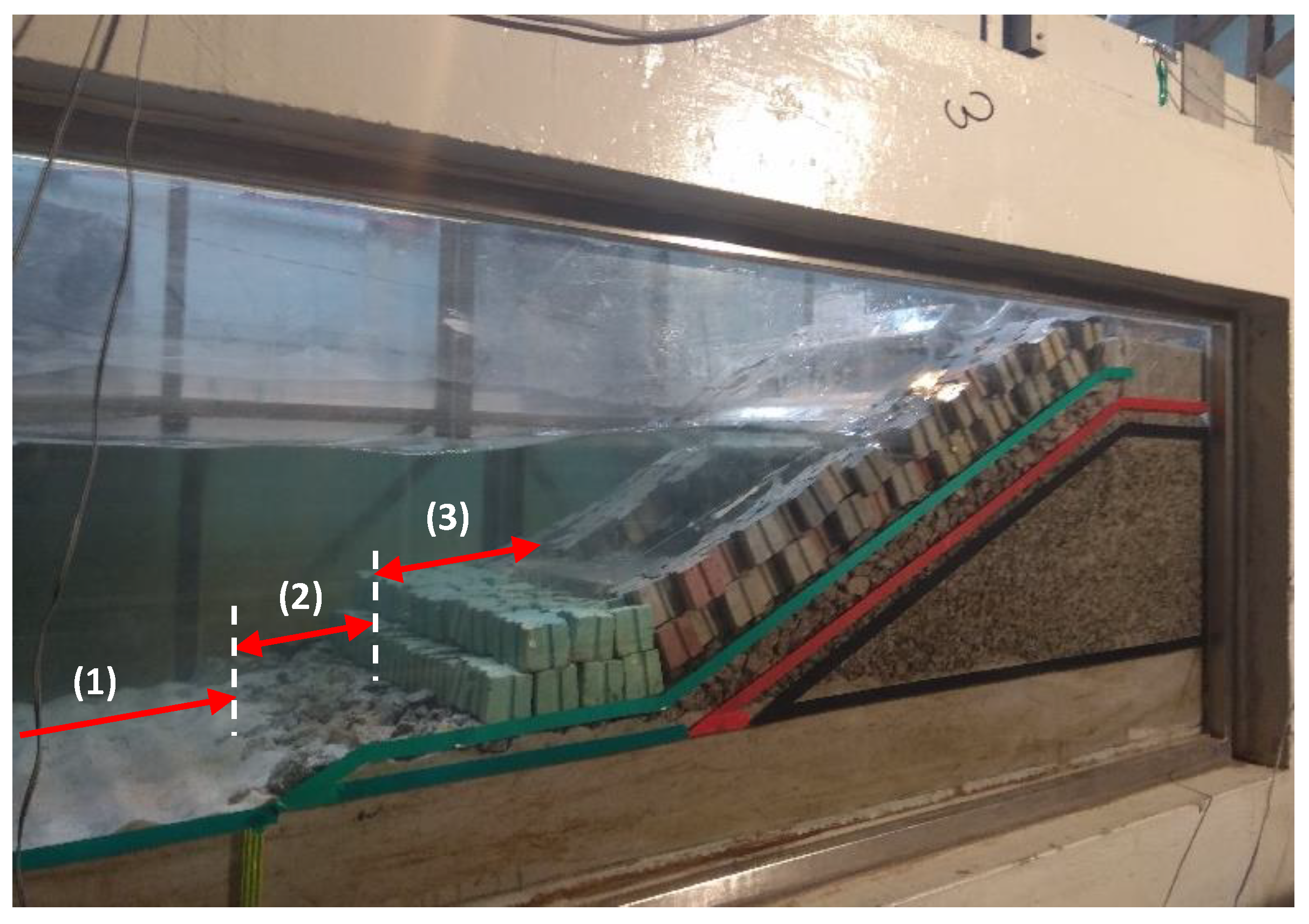
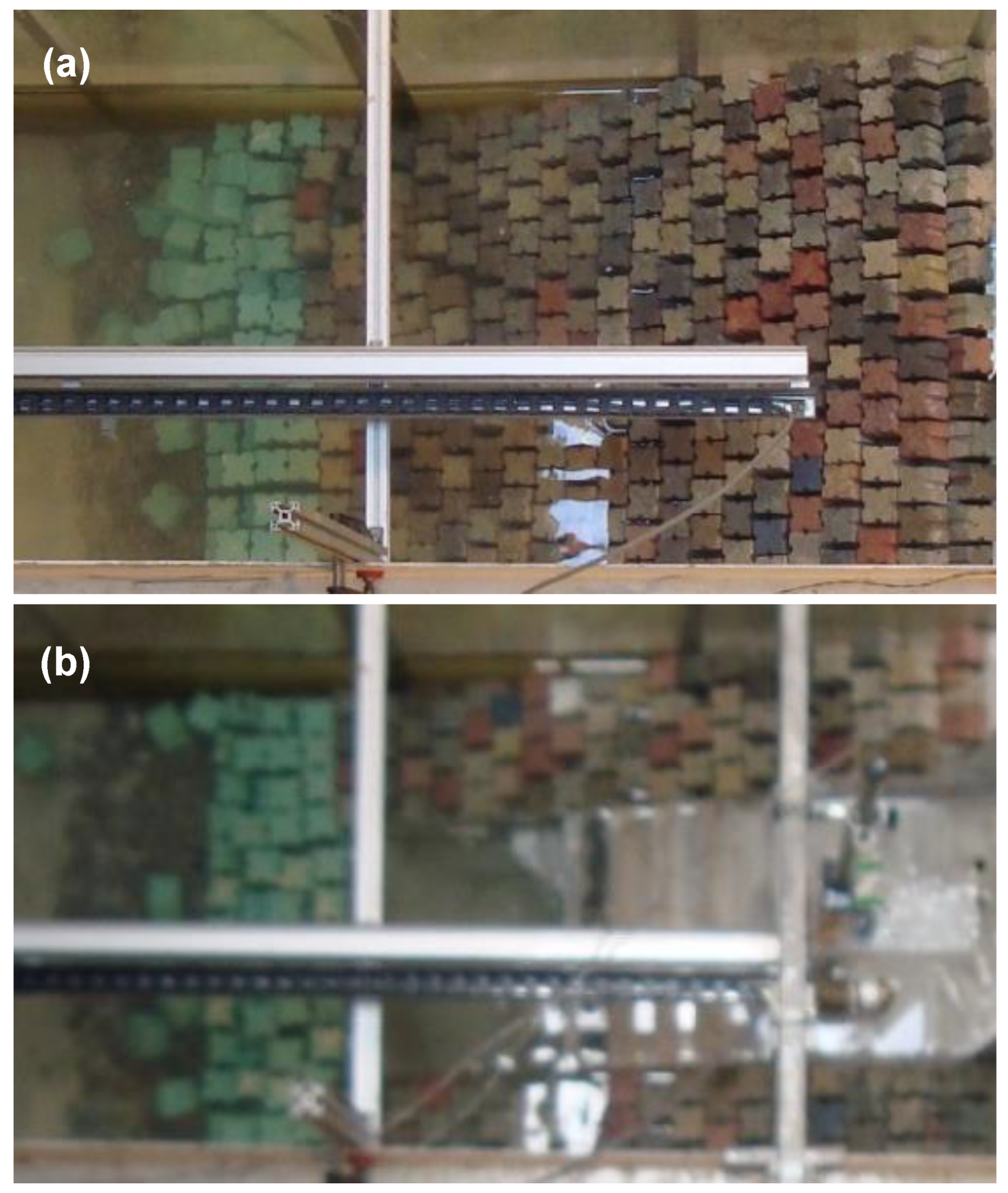
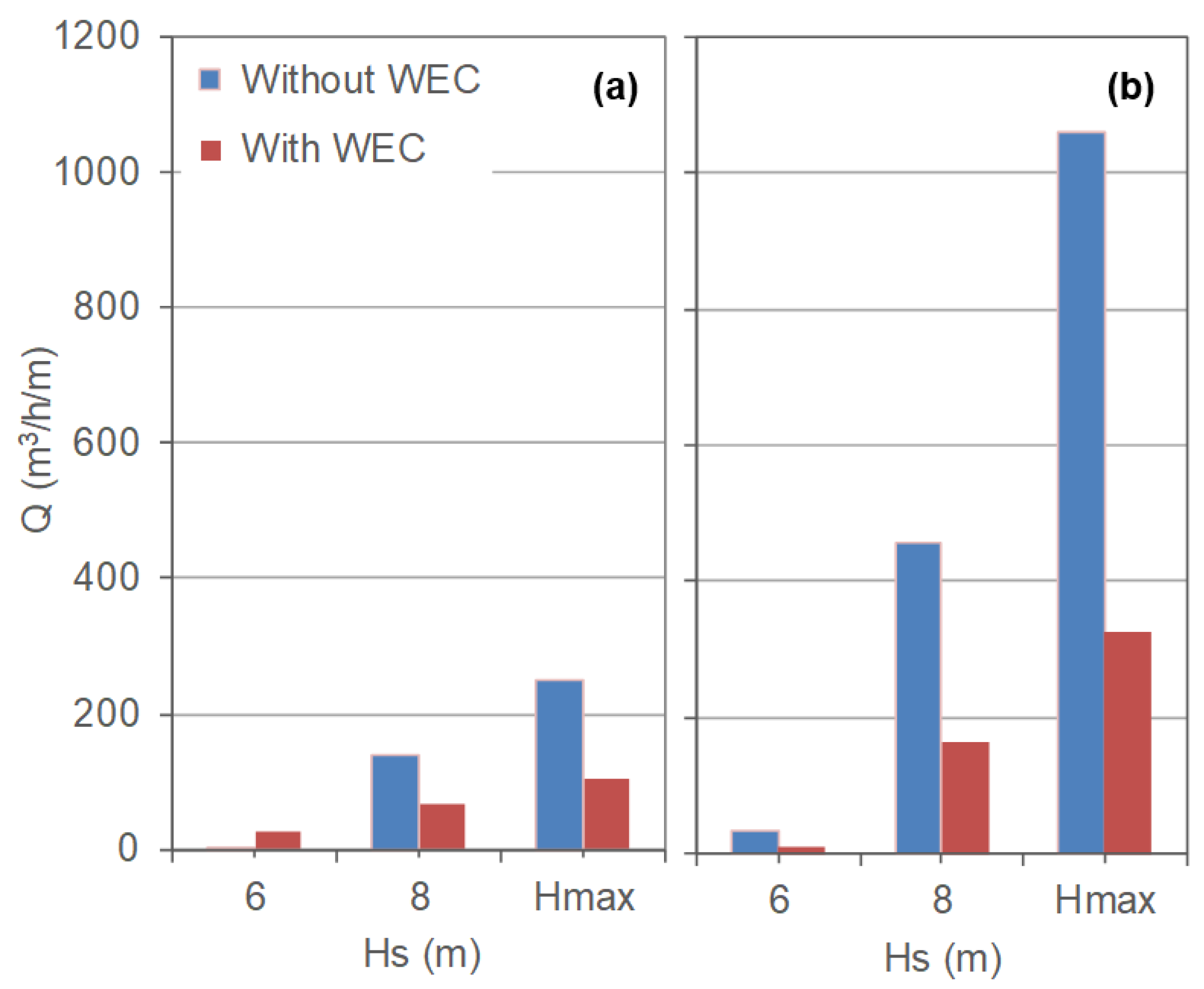
| Water Level | ||
|---|---|---|
| 6.0 | 13 | |
| 8.0 | 16 | MLWS |
| 9.5 | 18 | |
| 6.0 | 13 | |
| 8.0 | 16 | MHWS |
| 11.0 | 16 |
| Test Series | Water Level | CR | |||||
|---|---|---|---|---|---|---|---|
| TS1 | 6.0 | 13 | 6.06 | 1.68 | 0.28 | 6.8 | |
| 8.0 | 16 | MLWS | 7.56 | 2.34 | 0.31 | 9.0 | |
| 9.5 | 18 | 9.11 | 2.89 | 0.32 | 8.9 | ||
| 6.0 | 13 | 5.87 | 1.81 | 0.31 | 6.8 | ||
| 8.0 | 16 | MHWS | 7.77 | 2.77 | 0.36 | 9.4 | |
| 11.0 | 16 | 9.63 | 3.09 | 0.32 | 10.6 | ||
| TS3 | 6.0 | 13 | 5.95 | 1.93 | 0.32 | 6.9 | |
| 8.0 | 16 | MLWS | 7.80 | 2.78 | 0.36 | 8.9 | |
| 9.5 | 18 | 8.83 | 3.20 | 0.36 | 8.7 | ||
| 6.0 | 13 | 5.85 | 1.89 | 0.32 | 6.8 | ||
| 8.0 | 16 | MHWS | 8.10 | 2.99 | 0.37 | 8.8 | |
| 11.0 | 16 | 9.85 | 3.50 | 0.35 | 10.0 |
© 2019 by the authors. Licensee MDPI, Basel, Switzerland. This article is an open access article distributed under the terms and conditions of the Creative Commons Attribution (CC BY) license (http://creativecommons.org/licenses/by/4.0/).
Share and Cite
Rosa-Santos, P.; Taveira-Pinto, F.; Clemente, D.; Cabral, T.; Fiorentin, F.; Belga, F.; Morais, T. Experimental Study of a Hybrid Wave Energy Converter Integrated in a Harbor Breakwater. J. Mar. Sci. Eng. 2019, 7, 33. https://doi.org/10.3390/jmse7020033
Rosa-Santos P, Taveira-Pinto F, Clemente D, Cabral T, Fiorentin F, Belga F, Morais T. Experimental Study of a Hybrid Wave Energy Converter Integrated in a Harbor Breakwater. Journal of Marine Science and Engineering. 2019; 7(2):33. https://doi.org/10.3390/jmse7020033
Chicago/Turabian StyleRosa-Santos, Paulo, Francisco Taveira-Pinto, Daniel Clemente, Tomás Cabral, Felipe Fiorentin, Filipe Belga, and Tiago Morais. 2019. "Experimental Study of a Hybrid Wave Energy Converter Integrated in a Harbor Breakwater" Journal of Marine Science and Engineering 7, no. 2: 33. https://doi.org/10.3390/jmse7020033
APA StyleRosa-Santos, P., Taveira-Pinto, F., Clemente, D., Cabral, T., Fiorentin, F., Belga, F., & Morais, T. (2019). Experimental Study of a Hybrid Wave Energy Converter Integrated in a Harbor Breakwater. Journal of Marine Science and Engineering, 7(2), 33. https://doi.org/10.3390/jmse7020033








